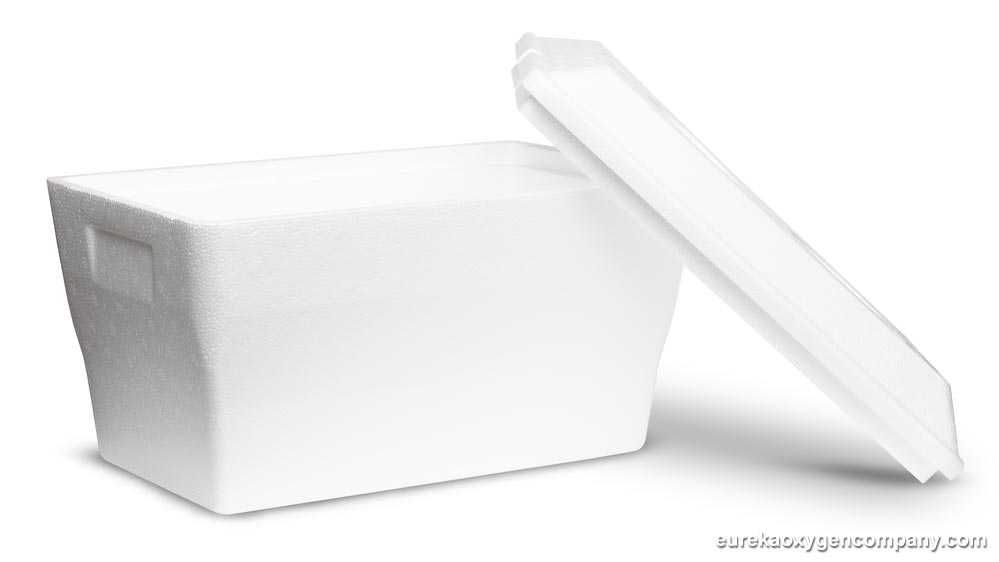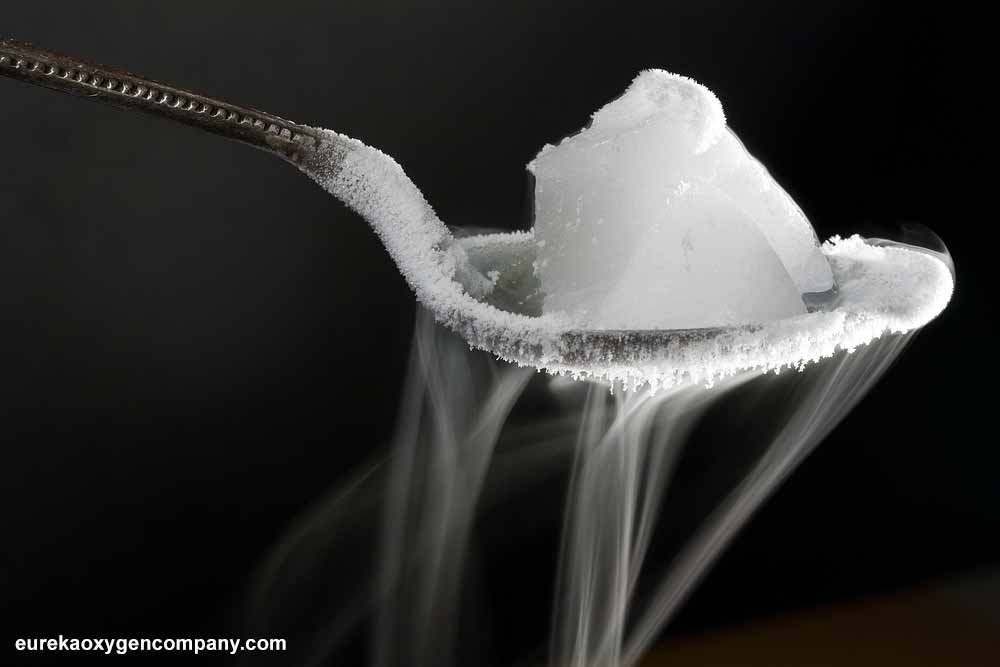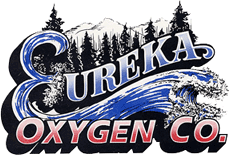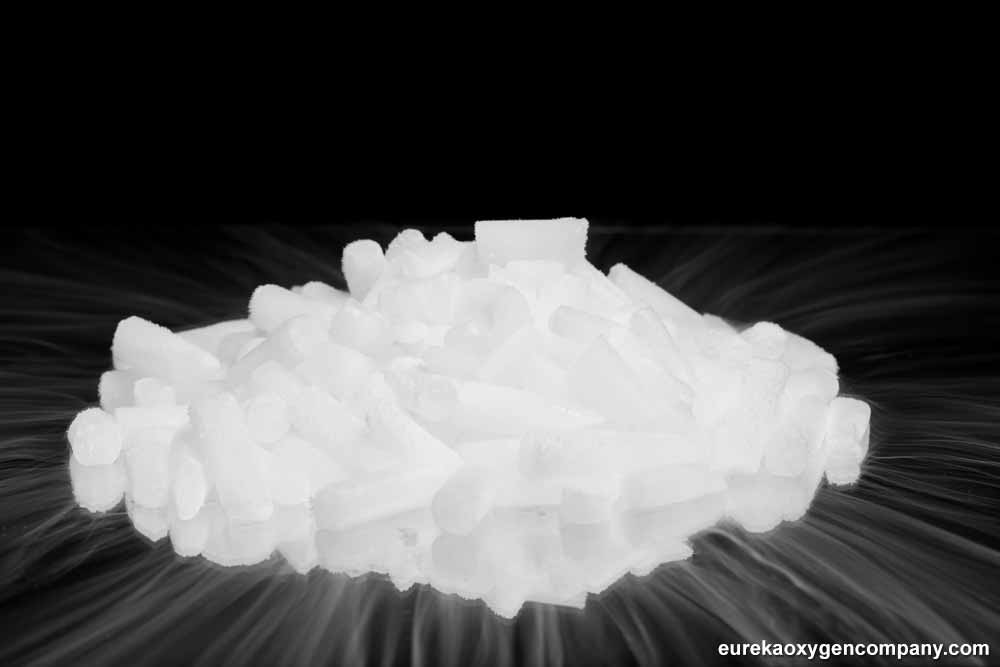Dry ice is the solid form of carbon dioxide (CO2), which is the same gas that gives carbonated beverages their fizz.
Usually captured during the manufacturing process, CO2 is subjected to extreme pressure and low temperatures (-109.3°F or -78.5°C) until the gas condenses to a liquid. The liquid CO2 is then formed into solid blocks by being injected into a block press or pelletizer.
Through a process known as sublimation, CO2 changes directly from a solid to a gas, skipping over the liquid stage – hence the name “dry ice.”

What is Dry Ice Used For?
Despite its mystifying ability to produce a thick blanket of creeping fog, dry ice is primarily used as a cooling agent for perishable items like food, medications and biological samples where traditional freezers are unavailable.
If your fog machine is fully stocked, however, you may consider using dry ice in your cooler on your next extended camping trip.
Why Use Dry Ice?
There are many distinct benefits to using dry ice in your cooler this summer:
It’s Colder
It Lasts Longer
It’s Compact
Instead of using 3 pounds of ice for every gallon of space in your cooler, save space by swapping for dry ice. It only takes ¼ pound of dry ice to chill a 5 gallon cooler, leaving plenty of room for more food storage.
Dry ice can even be used to extend the life of your traditional ice by keeping the temperature inside your cooler below the melting point of ice (32°F or 0°C).

No Mess
Because it doesn’t melt, dry ice won’t leave your sandwiches soggy and waterlogged at the end of a long, hot day. Dry ice sublimates into gas which escapes into the air when the cooler is opened, so there is no need to drain any liquid from your cooler, either.
Using Dry Ice in Your Cooler
Whether you’re packing for a trip to the beach, camping out or even in emergencies such as power outages, dry ice can take a standard cooler to the next level.

Be Sure to Position Your Dry Ice Properly:
- When keeping foods COOL, cover the dry ice with an insulating material such as newspaper or cardboard (to prevent any direct contact with the dry ice), then place food or cans on top.
- When keeping foods FROZEN place dry ice on top of items with an insulating material in between. Do not allow direct contact, freezer burn damage may result.
Storage and Safety
While it is necessary to take appropriate measures when using and storing dry ice to avoid the risk of injury, the main focus of dry ice storage is to prevent the conversion of dry ice to carbon dioxide.
- Hard-sided, insulated coolers are the best choice, and many come with wheels for easy transportation.
* Dry ice is not recommended for use in soft coolers, as it may damage the material. Dry Ice should never come in contact with the walls of your cooler. - Dry Ice should never be stored in a home freezer, but can be safely stored in a styrofoam container that is not airtight.
- Always transport and store dry ice in a place with sufficient ventilation and air circulation to prevent the accumulation of carbon dioxide gas.
- Do not leave dry ice to rest on top of any countertop or ceramics.
- Use gloves, tongs, and other safety equipment when handling dry ice to prevent direct skin contact. Wear safety goggles before attempting to break dry ice.
- Wrapping dry ice in a towel before storing can help it to last longer.
- Fill any remaining space in your storage container with crumpled newspaper to reduce dead space and slow the sublimation process.
- Keep the container closed as much as possible to keep warm air out and prevent evaporation.
- Be aware of dry ice in any consumable goods and limit its use when imbibing alcoholic beverages.
- Seek prompt medical attention for any burns that peel or blister.
* Please note: the quantity of dry ice used in a cooler is unlikely to produce carbon dioxide gas in sufficient quantity to cause any health problems.
Disposal
The best way to safely and responsibly dispose of unused dry ice is to allow the unused portion to continue to sublimate. Make sure the area is well ventilated while the dry ice continues to disappear.
- Do not put dry ice down a sink or in a toilet, as this will cause damage.
- Do not put dry ice in a trash can or leave it where it can accidentally be picked up or touched by someone who doesn’t know it’s dry ice, as it can burn them.
As a leading manufacturer, Eureka Oxygen provides solutions for all of your dry ice needs from commercial and retail to private party fun. Visit our website today to find the location closest to you!

